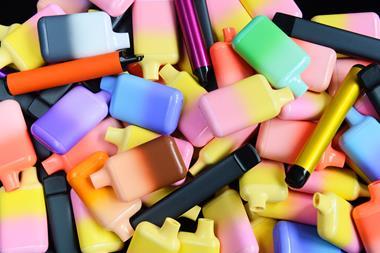Accounting for some 15% of footfall in convenience stores, food to go is the recent success story within the industry when it comes to customer missions. Store owners have realised that it isn’t difficult to create a solid food to go offering that caters to busy customer needs, and that even if they don’t have the space to offer hot food to go, their on-the-go snacking offering needs to be up to scratch. Of course, it’s important to be aware that it’s not just lunchtime that you have to be ready for.
Top 5
Mission Products
1. Soft drinks
2. Confectionery
3. Sandwiches
4. Crisps & Snacks
5. Bakery
“The opportunity is clear - 61% of UK adults buy lunch to go at least once a week,” says HIM’s Katie Littler. “It’s no longer just about a quick pre-packed sandwich for lunch - consumers are eating on-the-go around the clock, while breakfast food to go is a big battleground and is still an under-developed opportunity for retailers.”
After what was perhaps a slow start in the convenience sector, independent retailers are fast learning what works in the food to go category, according to Littler. “C-stores are getting better at food to go, with 50% of shoppers saying that a convenience store is now a credible choice for eating on-the-move, and nearly one-third (29%) say the quality of food to go offered has improved,” she says. “The top improvements shoppers want in food to go include more hot options which they would pay more for, meal deals and better quality sandwiches.”
Country Choice’s marketing controller Stephen Clifford says customers need to be made aware that the store can provide what they need and that the simple solution of a meal deal should not be overlooked. “In-store POS with consumer-friendly language is another way of getting the message across,” says Clifford. “Retailers need to give greater focus to the shopper mission and where practical this may involve merchandising. But where this is not possible, the ‘link save’ across complementary categories is a tried and tested way of helping shoppers decide what to buy and boosting basket spend.”
According to Mondelêz International trade communications manager Susan Nash, customers who are on a food to go mission are willing to spend money but they may not know on what, thereby providing more of an opportunity for convenience retailers to increase basket spend. “The consumer will visit a store with a view to buying something to eat straight away,” she says. “They may or may not have a specific view on what they will purchase and they could be considering a main item, but they will also be open to ideas.”
Nash advises retailers to make it as easy as possible for customers to satisfy their need for quick purchases. “By creating a distinct ‘on-the-go’ eating area, the shopper can browse a wide range of options, including Belvita Breakfast biscuits with Kenco coffee, for example, which in turn may lead to additional purchases and will ultimately improve customer satisfaction.”
Clifford agrees and advises retailers to create a food to go area to help customers satisfy their mission. “Implement a store layout that reflects shopper missions,” he suggests. “For example, many of our retailers now have a ‘coffee station’ that features a coffee machine with cookies and cakes.”
Retailer’s view
“The correct marketing of food to go is key to its success. It should be visible but not so in your face that it intimidates people. A lot of retailers add their food to go offering after everything else and tuck it away somewhere, which may be useful for them but no good to the customers. They want to find what they want fast.
“It’s also important to remember that if you have a bake-off or sandwich offering, you should show it off to customers. Seeing the sandwiches being prepared fresh in store lends credibility to the offering and to your entire fresh range.
“My advice is to start off small and have dedicated people run it. There’s no point in having staff jump off the tills as they won’t be able to focus properly.
“Also remember that food to go is more than just hot snacks and sandwiches, and to put some secondary displays near the till as customers may not realise they want food to go.”
Arjan Mehr, Londis Bracknell, Berkshire
Source
Aidan Fortune






















No comments yet